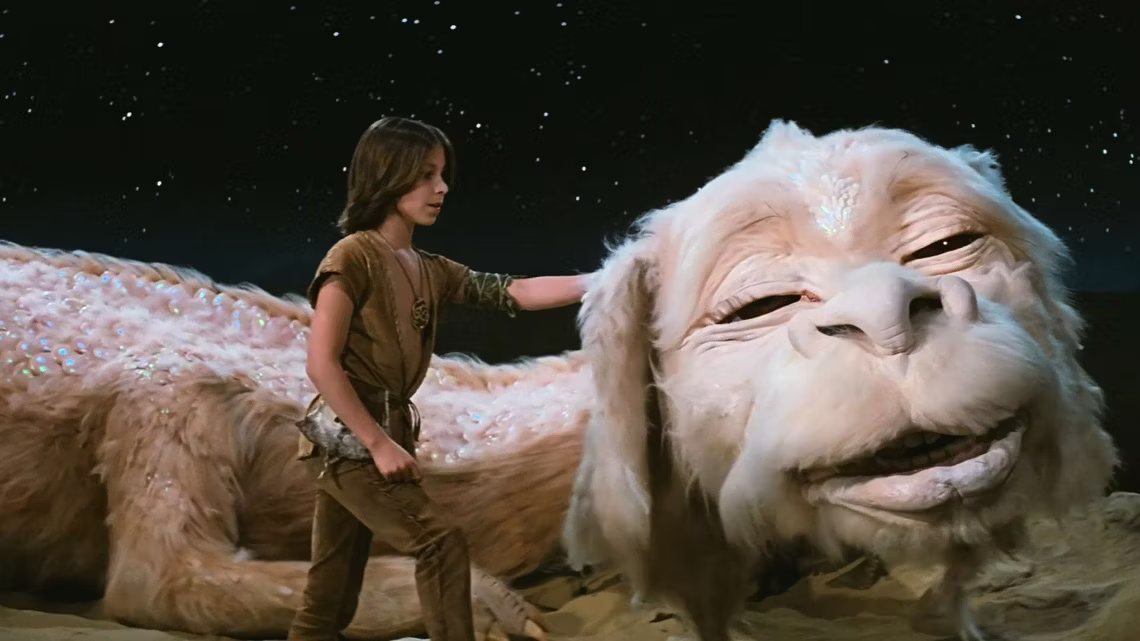Read more about the genesis of the Australian film industry in the book Money, art and madness: How the war between bureaucrats & auteurs killed the Australian film industry, which was recently ranked number one in Amazon’s ‘Performing Arts Category’.
The Australian film industry was in a state of flux in the late-1980s. Hits such as Crocodile Dundee and Young Einstein had put Australia on the world map, yet the industry was on shaky ground.
The 10BA tax break which underpinned production was being wound back thanks to widespread rorts while the ‘87 stock market crash had caused lucrative international pre-sales to evaporate.
Enter the newly-launched government film agency, the Film Finance Corporation (FFC), which had millions of dollars to directly invest in screen productions. It rolled out the money quickly to prop up the industry although few of its early films found a widespread audience.
The Way of the Wirinun – a $15 million kids-focused fantasy film backed by Disney – promised to be different. The production company, Entertainment Media Partners (EMP), was asking for $6 million from the FFC.
“This film will be one of the most significant for the Australian film industry both in terms of size, special effects production and involvement of a major US distributor,” FFC investment manager Jonathan Shteinman wrote in the film’s funding application, now released by the National Archives of Australia.
But despite the FFC approving its $6 million investment in June 1989 – the equivalent of $15 million today (well above Screen Australia’s current $2 million cap on feature film investments) – the project had fallen apart by February 1990. It provides a glimpse into the way large films were structured at the time and the precarious nature of film funding.
The film, about an 11 year-old boy Po living in drought-stricken NSW, was being driven by producers Fred Schepisi (two years after his success directing Steve Martin in Roxanne), Peter Beilby, and Robert Le Tet. They were slated to receive $156,000 each (“below half that which could be charged in the marketplace”) with Schepisi managing the project’s creative elements and supervising script refinements.
The story follows Po, who disobeys his parents and watches a corroboree where he learns that a wirinun called Crowman drank up all the water and floated it away as ice. Po teams up with an Aboriginal boy called Binghi and through a series of adventures where Crowman tries to stop them, eventually brings back the rain.
Phillip Noyce or John Seale were slated as possible directors while The Twilight Zone and Star Trek VFX guru David Sosalla would also play a key role bringing the film to life. His skill would be needed to make the film believable to audiences. Disney already appeared to believe in the project.
The FFC’s $6 million investment would sit alongside the production company EMP’s $9 million (which was Disney’s pre-sale advance cashflowed into the production).
“Disney’s financial commitment (60 per cent of the budget) to the project, to be recouped from North America only, is an indication of the marketability of the project. The FFC has the rest of the world from which to recoup just over 40 per cent of the budget. The amount of territories left open to recoup less than half the budget leads one to conclude that it is highly likely that the FFC will recoup its investment,” Shteinman wrote in the FFC investment funding application.
All other returns, including overages from North America, would flow 15 per cent to EMP and 85 per cent to the FFC. If recoupment moved into profit, returns would be evenly split up until 200 per cent of the initial investment, with EMP taking a larger portion up until 300 per cent and higher again beyond that.
“In addition to Disney’s financial contribution they will be assisting by making available to the production all the resources of the Disney group. Disney are arguably the most successful film production studio in the world at this time. Production meetings held thus far have included Marty Katz, Sam Mercer and Michael Peyser, some of the most senior executives in the Disney organisation.”
The producers estimated the film would generate a net $21.2 million in territories outside of North America, but pointed to The Neverending Story and its reputed $US100 million from foreign territories for potential. While the film – a fairy tale about a young boy and a magical book – never achieved popularity in the United States, it broke box office records in Europe and Japan (and is today set to be remade again by See-Saw Films).
“As is the case with films which appeal to children, this film has achieved significant success in the video market and it is expected that The Way of the Wirinun will achieve similarly significant video sales.”
But there were still uncertainties – the budget wasn’t yet locked although above-the-line costs were set (US writers $600,000, the director $500,000, principal cast $500,000, the three producers $467,000, and script/story at $200,000).
Yet for all its potential, the film never progressed. There is no indication of why in the thousands of government film agency papers, which are weighed down by hundreds of failed projects.
Disney would later back the production of Peter Weir’s Green Card in 1990, which would deliver the FFC a rare profit, but consistent recoupment would prove more elusive; its graveyard of dreams only punctuated by sporadic success.
Money, art and madness: How the war between bureaucrats & auteurs killed the Australian film industry includes full production budgets and profit-and-loss statements for films including:
- Green Card
- Strictly Ballroom
- The Adventures of Priscilla, Queen of the Desert
- Reckless Kelly
- Muriel’s Wedding
- The Sum of Us
- Over the Hill
- Black Robe


